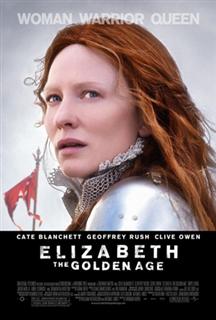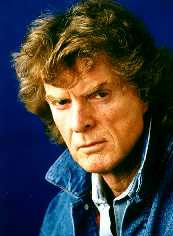 You know that sinking feeling you get when you take someone who hasn’t seen a great movie to see the long-awaited sequel to that film, and the follow-up doesn’t live up to it? It’s a strange form of guilt; a mixture of embarrassment and contrition. “I’m sorry,” you want to say. “The first one was really great. I didn’t mean to waste two hours of your life. And I really do have good taste in film…Really.”
You know that sinking feeling you get when you take someone who hasn’t seen a great movie to see the long-awaited sequel to that film, and the follow-up doesn’t live up to it? It’s a strange form of guilt; a mixture of embarrassment and contrition. “I’m sorry,” you want to say. “The first one was really great. I didn’t mean to waste two hours of your life. And I really do have good taste in film…Really.”
Shekhar Kapur’s “Elizabeth: The Golden Age” evoked that sinking feeling in me this weekend– and it’s an absolute shame, when 1998’s Academy Award-winning “Elizabeth” evoked such awe. But my friend assured me that he wasn’t really that disappointed since sequels rarely live up to the films they follow.
But I had high expectations for “Elizabeth: The Golden Age” and was disappointed. Kapur had taken his Bollywood sensibilities, a then relative-newcomer named Cate Blanchett and a riveting bit of history and turned the story of the young, Protestant Elizabeth (heir to Henry VIII) and her ascendancy to the throne over opposition of Catholic enemies and men of all denominations, into a violent, beautiful tour de force. The cinematography was innovative, the costuming and set design lush and the intrigue palpable.
But the intrigue isn’t nearly as intriguing in “The Golden Age,” and the story is uneven and somewhat disjointed. Even with Blanchett’s hurricane of a performance and the amazing costuming, the film falls flat overall. It is twenty-years after Elizabeth’s ascent and she’s still battling want-to-be suitors and Catholics at home and abroad. As in the first film, the Catholic threat is both familial and foreign, but this time it is her cousin, Mary Queen of Scots, plotting against her with the King of Spain, Phillip II, who also happens to be Elizabeth’s one-time brother-in-law. (That’s European royalty for you … one big, unhappy family!)
While Mary wiles away her time in home confinement, Phillip bow-legs his way around castles and cathedrals followed by a cadre of cardinals, cursing the Virgin Queen in an almost comical, whispery Spanish. Meanwhile, back in Merrie Olde England, even the mostly unrequited romance between The Queen and Sir Walter Raleigh (the ever-dashing Clive Owen) can’t do much to enliven the film.
But Blanchett is a revelation as usual, perfectly embodying a regal queen one moment, and spurned woman the other. And her chemistry with Geoffrey Rush, as Sir Francis Walsingham her advisor and conspirator, is sublime, but sadly given far less screen time than in the first film.
The Golden Age’s” sea battles and “Lord of the Rings”-esque Spanish Armada is far more bombastic than the first, forgoing subtlety for symbolism. And even though the fate of England is at stake, this is no glorious Agincourt. Blanchett’s “St. Crispin’s Day” speech is virtually non-existent, a truncated high school pep speech, followed by a cursory battle.
Many reviewers have been bothered by the ecumenicism of this “Elizabeth.” Noting that while she did not outlaw Catholicism during her reign, she wasn’t exactly the broad-minded pluralistic princess she’s painted to be and that Kapur is clearly overlaying contemporary issues onto the Elizabethan tapestry. Valid points, except that this isn’t a documentary or a faithful history. Many of the facts have been treated with dramatic license in order to make a better story, so why not throw in a bit of religious revisionism?
Most jarring to me was the absolute one-dimensional depiction of Phillip of Spain. Although Elizabeth’s fervor for Protestantism was more firmly established in the first film, in the “Golden Age,” Elizabeth is clearly determined to keep England Protestant and “free thinking.” Obviously, Phillip was a zealous Roman Catholic, and believed he was called to return England to Catholicism. But unlike the first film in which we experienced richly drawn conspirators, Phillip comes across as a caricature; a foe unworthy of such a clever woman.
Kapur hopes to make a third film to finish out what he calls a “trilogy of power,” telling MTV Movie Blogs that “Elizabeth was divine in life. She goes beyond being a mere mortal. How do you come to terms with that? That is the third part [of this story].”
Hopefully, the third film will be as divine as the first and assuage any sequel guilt.


